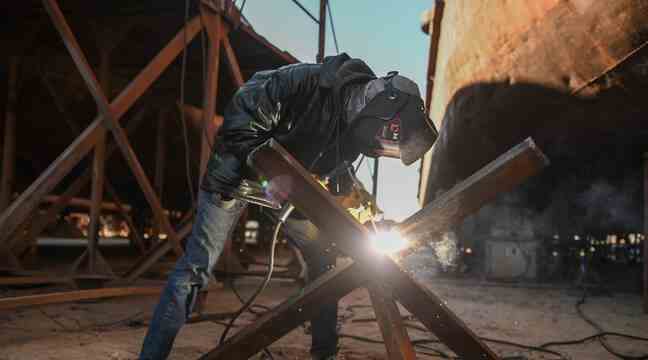The “battle for Kiev” is not far away. According to the Ukrainian General Staff, Russia is preparing the assault on the capital and several other major cities of the country. Satellite photos, taken on Tuesday night, do show a Russian convoy of about 60 kilometers, slowly progressing towards the city. On the sixth day of the Kremlin offensive, it seems that Vladimir Putin has reached his goal: Kiev. But why is he in such a hurry to enter the capital? Can the Ukrainian people stand up to Russian armor? 20 minutes takes stock of this “battle of Kiev” which could unfortunately become historic.
Why does Vladimir Putin seem so eager to reach Kiev?
“First there is a purely military objective, explains Johanna Möhring, research fellow at the Center for Advanced Security, Strategic and Integration Studies (Cassis). To take Kiev in order to install a regime led by Moscow is to establish Russian victory over the whole country. But there is also a real symbolic resonance to seizing a capital in time of war: “It is the political, economic and cultural center of a country. ” However, for the researcher at Cassis (University of Bonn), it may be possible to move the capital in the event of an attack: “History has shown us that political authorities can be moved to another city on national territory not occupied by the attacker, or even abroad. »
What is the weight of the “resistance” in Kiev?
“First of all, what seems undeniable with the hindsight of these five days of conflict, is that the Russian offensive strategy underestimated the resistance of Ukrainian civil society, contextualizes Guillaume Farde, professor affiliated with the School of Public Affairs of Sciences Po. Partly thanks to her, Kharkiv resisted and the maneuvers in the direction of Kiev were postponed until then. If conflict were to break out in the capital in the hours and days to come, Russian forces would therefore face difficulties directly due to their very choice to attack a capital. “The difficulty with an urban attack, like the one that should rage in Kiev, is that the advantage is always with the defender”, explains our expert. “The army knows the places better, knows where to hide and can invest high points such as buildings, he adds. And the same goes for civilians. Civilians continuing to prepare for battle as Russian forces advance towards them. They make, among other things, molotov cocktails in series or barricades made from pieces of rusty scrap metal.
But where do Ukrainians get this courage?
“In the context of the conflict that concerns us, we are leaving a conventional war to enter a guerrilla war”, explains Guillaume Farde. And with any guerrilla, goes its leader. “Volodymyr Zelensky has an indisputable link with this civil resistance. He is the man of the people in this conflict,” adds the professor. His strength in communication, in particular thanks to social networks and his presence on the ground, makes him a real driving force for the Ukrainian people. “On the strategic level, Volodymyr Zelensky, adopts a real Churchillian posture: we are alone to face the Russian army and we will defend ourselves with the last energy”, concludes Guillaume Farde. This is most likely the reason why he is a “head to chop” for Vladimir Putin. Galvanized by a Zelenski calling on “citizens to defend their country by making the ultimate sacrifice”, many civilians thus opposed “with their bare hands” the advance of Russian troops. As proof, these numerous videos posted on social networks showing Ukrainians facing Russian military vehicles advancing towards Kiev:
So can what is already called the “battle of Kiev” become historic?
According to Johanna Möhring… yes. “We must underline the symbolic, political, historical and spiritual importance that Kiev can take on in this confrontation”, specifies the specialist in European defense at Cassis. For our expert, the arrival of the Russian armed forces in the capital can portend many scenarios with regard to the intensity of the fighting. “But no matter how small, in the context of an urban war, civilian casualties will be very high and massive destruction of infrastructure inevitable,” she said.
If Moscow attacks Kiev, we can then speak of “urbicide” in the light of what happened in Chechnya with the battle of Grozny between December 25, 1999 and February 6, 2000. Highlight of the war between the Russians and the Chechens, this battle showed the Soviet army’s ability to conduct intense and deadly combat. “In the case of Kiev, one can only hope that Russia will respect international humanitarian law and seek to minimize the impact of the battle on populations and protected sites,” concludes Johanna Möhring.

